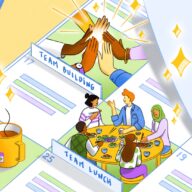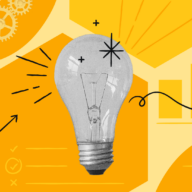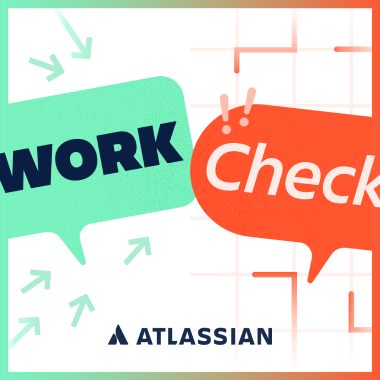Organizational learning isn’t just another buzzword in the corporate lexicon. It’s the mechanism that equips businesses to grow, adapt, and thrive as the world changes around them. Organizational learning is how a company becomes mightier than the sum of its parts. It’s a must-have in order to innovate and stay competitive.
Now more than ever, organizations need to develop cultures that prioritize learning in order to ensure their short-term and long-term success. And how that happens also matters.
What is organizational learning?
Simply put, organizational learning is the process of creating, retaining, and transferring knowledge that makes businesses smarter over time. In other words, it’s how a company’s collective memory is gained, maintained, sharpened, and leveraged to help the organization set and achieve its goals.
The four levels of learning
Every experience – good or bad – is a lesson. In organizations, the process of accumulating lessons into institutional knowledge unfolds across four distinct levels.
- Individual: When one person learns something new.
- Group: When teams learn something new together.
- Organizational: When the company as a whole learns something new, and adapts accordingly.
- Interorganizational: When businesses with a common interest learn from each other.
Organizations thrive when lessons learned in the workplace don’t just stay with one individual or group, but become shared information that helps everyone make better decisions moving forward.
What is a learning organization?
A learning organization is exactly what it sounds like: a company that prioritizes gathering and sharing knowledge across these four levels of learning. That means adopting systems and practices that support organizational learning, and then building them directly into the way the business is run.
In 1993, Harvard Business School professor David Garvin argued that an effective learning organization hinges on addressing three critical components: meaning, management, and measurement. According to Garvin’s “three Ms” model, companies that want to optimize for learning need to start with a clear definition of what a learning organization is – that is, what it looks like for themselves. What do they want to achieve? Where are they now relative to where they want to be? From there, the company needs to outline practical steps to bring their vision to life.
Finally, organizations must develop a plan for how to measure their growth. As Garvin put it, “You can’t manage something if you can’t measure it.” He proposed a complete learning audit that includes measuring the team’s cognitive and behavioral changes as well as any concrete improvements in results.
Achieving the three Ms requires businesses to become adept at a series of behaviors that Garvin identified as the five key pillars of learning organizations:
- Systematic problem solving: Developing a methodology to diagnose issues and collect data to help address them.
- Experimentation with new approaches: Embracing trial and error to find new solutions and ideas.
- Learning from past experience: Implementing the lessons from previous successes or failures.
- Learning from the best practices of others: Finding out what works for others, and borrowing from their approach.
- Transferring knowledge quickly throughout the organization: Having systems in place for efficient cross-company communication.
The three Ms are what a learning organization is made of, while the five pillars are the actions composing how.
The benefits of prioritizing organizational learning
Organizations that have the ability to continuously create, keep, and share information become their own most valuable assets over time. That’s because they’re continuously learning from their experiences, mistakes, and new data, amassing a well of knowledge that they’re able to draw upon in order to solve problems more effectively and make better decisions. As time passes, that well of knowledge gets deeper and more refined. Organizational knowledge matures into organizational mastery.
Organizational cultures that prioritize learning also ensure that valuable knowledge isn’t lost when employees leave but, instead, continues to inform the company’s development.
The cumulative effects of these benefits bring about benefits of their own.
Higher employee satisfaction
Research shows a strong link between organizational learning and job satisfaction. In fact, studies suggest that nearly 39% of job satisfaction can be explained by how well an organization learns and adapts. High satisfaction also means high engagement, which translates into low employee turnover. According to a 2023 SHRM survey, a positive job experience makes workers 68% less likely to consider leaving the organization.
Increased productivity, innovation, and efficiency
On top of the manifold performance-related benefits of high employee engagement, organizations that prioritize learning are equipped to be more effective in general. In fact, companies that invest in their teams’ learning report 11% greater profitability than those that do not, according to a Gallup report.
A more adaptable workforce
Adaptable employees and teams are better prepared to tackle unexpected challenges, integrate new technologies, and drive an organization’s success, according to recent research in the International Journal of Information Management. Analyzing 343 service companies in Spain, researchers found a clear connection between a company’s ability to adjust strategies to shifting demands and its capacity to weather tough market challenges.
Teams that can learn quickly and innovate under pressure build the resilience that keeps organizations ahead of the curve. Organizations that can’t adapt to change, on the other hand, have the odds stacked against them.
The three types of organizational learning
In 1978, Harvard professors Chris Argyris and Donald Schön proposed that organizational learning stems from the process of noticing and then fixing mistakes within an organization’s processes or protocols. According to organizational learning theory, how that process plays out tends to fall into one of three categories:
Single-loop learning
Single-loop learning is about improving the way things are already done by spotting and correcting mistakes or inconsistencies in existing processes. It’s usually triggered by outside factors like changing customer needs, market trends, or new rules and regulations. Argyris and Schön compared the single-loop learning process to the way a thermostat learns how to turn on or off in response to the temperature of the room, but never considers why the room temperature changed in the first place.
Double-loop learning
Double-loop learning happens when an organization doesn’t just fix mistakes but also questions the deeper assumptions and beliefs behind its processes. Instead of just improving efficiency, this type of learning helps the organization become more adaptable and flexible by evaluating bigger-picture questions. It involves rethinking goals, strategies, and the way things are done. It can be triggered by outside feedback, like market changes, or internal challenges, such as conflicts or tough decisions.
Triple-loop learning
Triple-loop learning goes beyond fixing mistakes or questioning assumptions; it’s the process of organizations learning how to learn. It helps employees think differently about learning and challenges old ways of thinking. This approach also connects different departments, allowing teams to share knowledge and learn from each other. With triple-loop learning, employees understand what drives them to learn, what holds them back, and how to develop better strategies for growth.
How leaders can strengthen organizational learning
Organizational learning begins by cultivating a supportive learning environment that allows employees to speak up without fear, appreciate different perspectives, explore new ideas, and take time for reflection. From there, it’s important for organizations to implement concrete learning processes to ensure that knowledge is gathered, shared, and applied systematically. Leadership plays a key role in every step of the way. Together, these elements create a culture where learning drives innovation.
A strong learning culture leads to more engaged employees, improved collaboration, and sustainable growth. Businesses that fail to prioritize learning risk falling behind the rest of the pack.





 )
) 






































